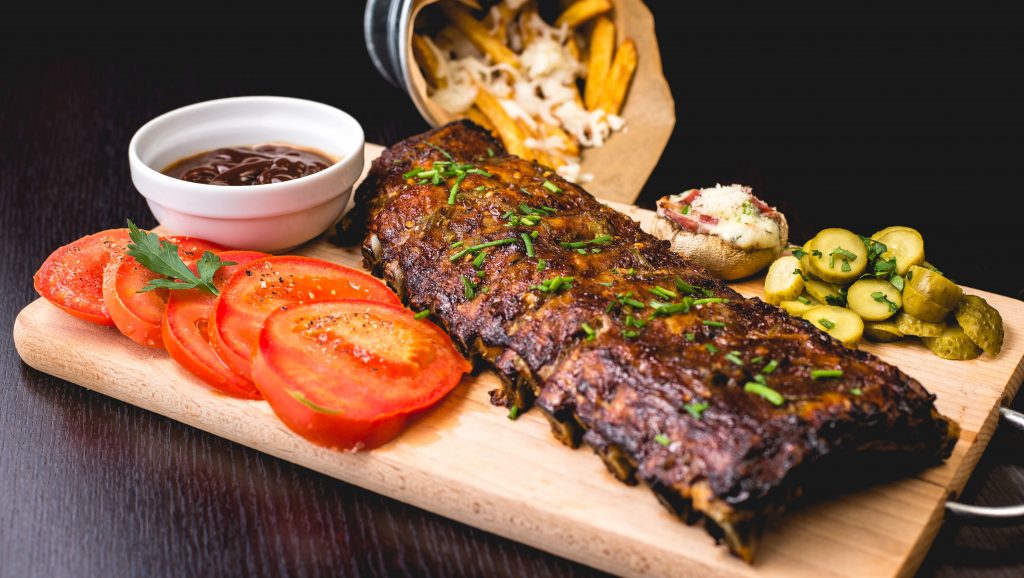Bought a delicious cut of pork and don’t know the best way to cook it? We have you covered.
When buying pork, always look for the pinkest, firmest flesh. If it looks damp, pale and soft, it’s probably not the best quality.
Pork can be used to make various items from crackling to sausages, but we’ll go through the most common pork cuts you can find in South Africa, ways to cook them and recipes to use.
Pork neck
This is one of the juiciest pork cuts, owing to a large amount of collagen and a small amount of marbling, which gives it a succulent, flavourful edge over other cuts. You can get this cut deboned and grill it in a large pan or on the braai, or create a showstopper roast with all the trimmings.
MUST-TRY RECIPE: Pork neck steaks wit lemon and sage pasta
Pork loin can come as a rack of loin with bones in it and with or without crackling. You can also have it deboned and then stuffed or rolled up, tied with string, and roasted in the oven or on the braai. There are also loin chops, which have a layer of fat on the outside with lean meat on the inside. Loin steaks are just chops with the bones removed. You can pan-fry them for a quick supper, or braai or oven grill them, adding a basting sauce or marinade so they don’t dry out.
WATCH: How to make rolled pork loin with Christmas mince pie stuffing
The shoulder also contains a good amount of collagen and will give you a beautifully tender, succulent piece of meat once cooked. It does contain bone, but you can ask your butcher to remove this if you like. You can also request for it to be cut into steaks or chops. Many cooks say pork shoulder is the best for a great pulled pork recipe. Roast it whole in the oven, or pan-fry or grill the steaks or chops. You can also pop them on the braai for that extra smoky flavour.
TRY THIS: Mild pork curry or Maple mustard mini pulled pork pies
You can either have baby back ribs – which are a bit meatier, high in fat and don’t require as long to cook – or spare ribs. Spare ribs are longer and chunkier with less meat. They’re high in connective tissue and fat as well, but need to be slow-cooked to break them down and tenderise them. Either can be done on a braai or in the oven with a great marinade or basting sauce so they don’t dry out.
MUST-MAKE RECIPE: Quick and easy cheat’s bar buns with pulled pork ribs
Fillet or tenderloin is a small, lean, very tender and boneless cut. It’s usually the most expensive, but it is delicious so definitely worth it. Ask your butcher to remove the thin silver membrane on the outside of the fillet to ensure it doesn’t curl up while being cooked.
TRY THIS: Pork fillet with brandy, mustard and cream sauce or Apricot pork kebabs
This is the fattiest cut of pork meat. Blast the outside with some heat to get the crackling going and then slow-cook it so that the fat and connective tissue break down. It will be really soft and tender. It can be made into streaky bacon or pancetta. Pork belly is delicious when braised or cured.
TRY THIS: Sticky pork belly bites
The hock and shank contain a lot of bone and can be cooked whole or sliced up to go into stews and potjies. An eisbein is a cured hock. The shanks make rich stock and are usually sold in round discs as stewing meat. Large amounts of collagen can be found in the skin around the hock and shank. This turns into gelatin when cooked.
MUST-TRY RECIPE: Curried pork shanks
A leg of pork is usually the most affordable cut. Have the bones inside the leg removed before roasting as it will make it easier to cook. You can ask for the bones to make a rich stock for soups. The leg of pork makes a great roast, but you should know which cut of the leg you’re getting. They can all be shaped and tied with string.
- Topside: This is a very dry muscle that will need a lot of basting when roasted. Braising it over low heat in a rich stock or sauce will also produce delicious results.
- Silverside: This should be cooked in the same way as the topside.
- Soft shin: The smallest of the leg muscles, it can be very juicy and tender if slow-braised or cooked in a pot roast in the oven.
- Thick flank: Also a smaller muscle, it has more flavour and collagen than the topside or silverside and can be cooked the same way as the soft shin.
TRY THIS: Pulled leg of pork with crunchy slaw
Looking for more recipe inspiration? Head to the SA Pork website.

